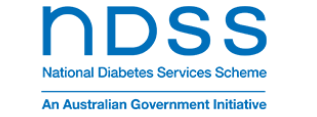What is glucose monitoring
Students with type 1 diabetes need to check their glucose levels regularly, so they can quickly respond to levels that are too low or too high. Glucose levels will change throughout the day and many things can affect them, including:
- carbohydrates e.g. bread, rice, pasta, noodles, fruit, milk, yogurt, and sugary food
- insulin
- physical activity
- illness
- stress
- hormones (such as during puberty).
Checking glucose levels helps students make decisions about managing their type 1 diabetes, such as working out insulin doses, managing physical activity, and knowing when to treat a low or high glucose level.
Students with type 1 diabetes can use a continuous glucose monitor (CGM) and/or a finger prick blood glucose meter to monitor their glucose.
Discover why glucose checks aren’t “tests” – and how small changes in language help reduce stigma and support students in the video below.
When students should monitor glucose levels
Students must be able to check their glucose levels throughout the day. This allows them to respond to levels that are too high or too low as quickly as possible.
When and how often a student needs to check their glucose levels is individual and will be specified in their diabetes management plan.
Common times to check glucose levels include:
- before eating
- before, during and after physical activity
- when the student feels their glucose levels are high or low
- when the student is not feeling well
- other times described in their diabetes management plan.
Many students can check their own glucose level. Some students need supervision, and others will need staff to check their glucose levels for them. Younger students often need more frequent glucose checks and more staff assistance.
Students using CGM always need access to their mobile phone or other display device to check their glucose levels.
Glucose monitoring is an essential tool for students with type 1 diabetes. Improve your knowledge and skills with Diabetes in Schools online training.
Diabetes management plans and glucose monitoring
The student’s diabetes management plan will state:
- how the student monitors their glucose levels
- when the student needs to check their glucose levels
- the student’s target glucose range
- the amount of school support the student will need with checking glucose levels.
Supporting a student with glucose monitoring
Schools need to make sure that the student:
- can monitor their glucose levels at any time, including times they are not in the classroom
- checks their glucose level if they feel it is ‘high’ or ‘low’
- has access to their hypo kit to treat a low blood glucose level at any time
- has access to the bathroom to wash their hands before a finger prick blood glucose check
- has privacy if requested when monitoring glucose levels or injecting insulin.
Last updated: September 2025



